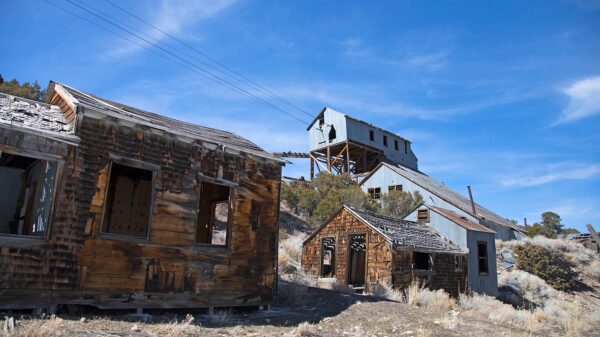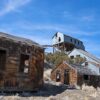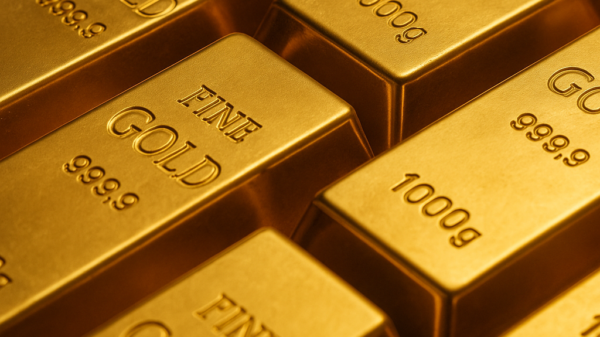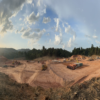There’s an active volcano in Antarctica shooting $6,000 in gold dust into the air every single day.
NASA’s Earth Observatory revealed on Friday that one such erupting volcano spits pockets of gas containing 80 grams of crystallized gold daily.
Approximately 138 ice-capped volcanoes populate the region, with 91 discovered as recently as 2017. Although most are considered dormant or possibly extinct, the Smithsonian Institution’s Global Volcanism Program reports that three have erupted recently. These three are Penguin Island, which erupted in 1905; Deception Island in 1970; and Mount Erebus in 1972.
The latter of these, Mount Erebus, is arguably Antarctica’s most famous volcano. It holds the titles of the tallest active volcano on the continent, with its summit reaching 12,448 feet (3,794 meters), and the southernmost active volcano on Earth.
Named after the personification of darkness in Greek mythology, Mount Erebus was erupting when Captain Sir James Clark Ross first discovered it in 1841. It sits alongside two other volcanoes on Ross Island, which bears the name of the aforementioned British explorer.
Satellite images reveal a hot lava lake that has been bubbling in the summit crater of this massive volcano for the past 32 years. It has continuously erupted since “at least 1972,” said Conor Bacon, a postdoctoral researcher in volcano seismology at the University of Cambridge.
It emits plumes of gas and steam and occasionally hurls out rock “bombs” in what are known as “strombolian eruptions,” according to NASA.

Mount Erebus is one of two active Antarctic volcanoes. Image via NASA Earth.
Read more: Calibre Mining pulls high value gold and silver in Nicaragua
Read more: Calibre secures commissioning contract for Valentine plant; signs gold supply deal with Asahi
Tiny specks of gold measure approximately 20 micrometres
But most extraordinarily of all, these gusts of volcanic gas are almost literally worth their weight in gold, as they contain tiny specks of gold measuring no larger than 20 micrometres. Despite the seemingly minuscule amount, scientists estimate that the volcano produces around 80g (2.8 ounces) of the precious metal daily, valued at over $6,000.
The dust also doesn’t just stay on Mount Erebus. Instead, scientists regularly find traces 1,000km (621 miles) from the volcano.
Still, not all Antarctic volcanoes are known for their glittering belches. Many experts are still trying to answer the questions: could they erupt one day? And what would happen if they did? Researchers acknowledge the difficulty in predicting whether any of the 138 volcanoes on the continent is a ticking time bomb.
So, what would happen if one or more of these volcanoes were to erupt?
Looking back nearly 20,000 years provides some clues. Mount Takahe, located near the remote center of the West Antarctic Ice Sheet, erupted in a series of events rich in ozone-consuming halogens around 18,000 years ago, according to a 2017 study published in the journal PNAS.
Scientists have posited that these eruptions were responsible for creating an ancient hole in the ozone layer and warming the southern hemisphere, which melted glaciers and helped end the last ice age, said John Smellie, Professor of Volcanology at the University of Leicester.
Still, Prof. Smellie conceded that for such an environmental impact to recur, a series of similarly halogen-enriched eruptions from one or more volcanoes currently exposed above the ice would be necessary.
Read more: Calibre Mining remains on track to deliver on its 2024 guidance of between 275-300K ounces
Read more: Calibre’s 2024 Valentine exploration program shows vast expansion potential, promising targets
Gold spewing volcano no factor on global production
While the concept of a volcano that spews gold daily is fascinating, its impact on global demand for gold would likely be minimal unless the conditions for collection and processing undergo significant changes, making it much more economically practical.
The impact of a volcano that produces about 80 grams of gold per day is minimal when considered against the global annual gold production of over 3,000 tonnes, making the volcanic contribution relatively insignificant.
That’s why companies like Barrick Gold Corporation (TSX: ABX) (NYSE: GOLD) or even a mid-tier gold producer like Calibre Mining Corp. (TSX: CXB) (OTCQX: CXBMF) have little to worry about.
However, the challenging and remote conditions of Antarctica pose significant logistical hurdles that could prevent this.
Additionally, the costs of extracting and transporting the gold from such an inhospitable location are likely to outweigh the value of the gold itself, rendering the operation economically unfeasible with current technology and market prices. While the idea of a “gold-spewing volcano” could initially sway market perceptions and lead to speculative trading, any effects on gold prices would probably be short-lived once the modest scale of the output is recognized.
Nonetheless, over an extended period, the steady accumulation of even small quantities of gold could potentially impact the market if future advancements make the collection and extraction processes more economically viable and efficient.
.
Calibre Mining is a sponsor of Mugglehead news coverage
.













